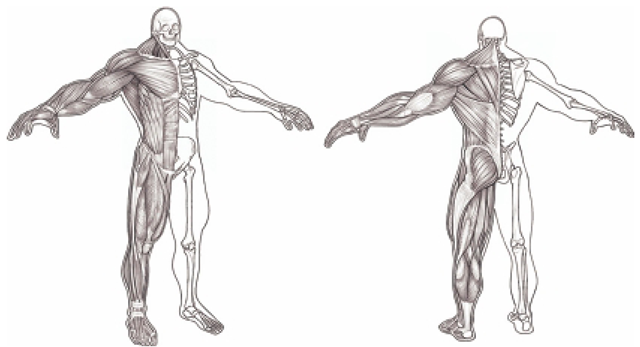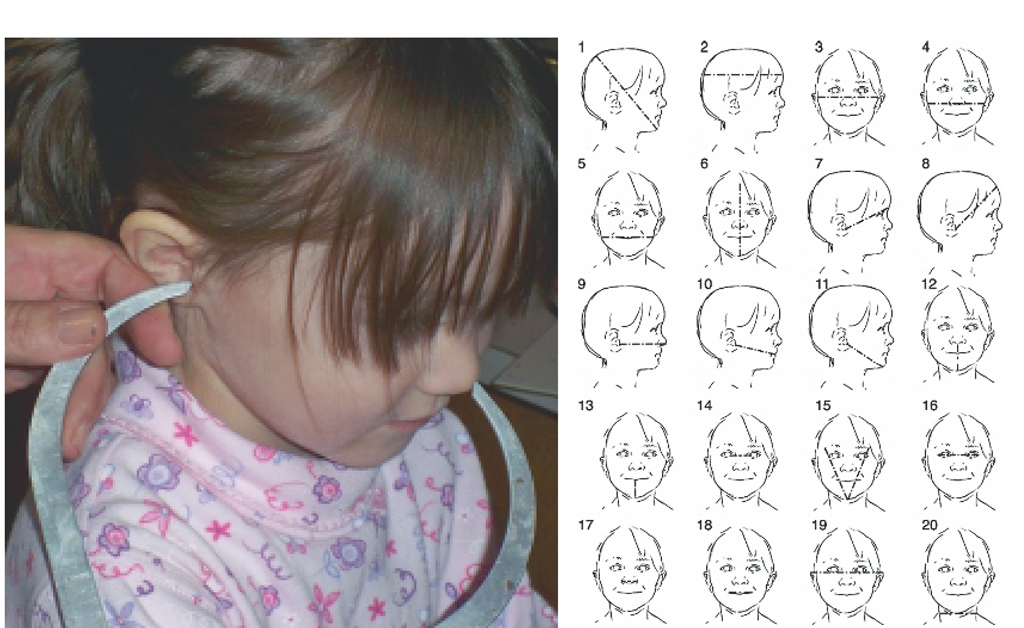Proportions
Along with surface anatomy, a sculptor must know human proportions. Proportions can refer to size comparison between specific parts such as an ear in relation to the face or it can also refer to known ratios between the overall size of a figure and its parts. For example, the average man is seven and one half heads in height. Also common errors like squashing the top of the skull can be eliminated by knowing that the eyes are in the middle of head. Thoroughly understanding proportions will enable you to create accurate compositions and avoid time-consuming mistakes.
FIG 1.4 Sculpting a Natural Sculpture Begins with the Understanding of Anatomy.
Like anatomy, there are extensive resources available on proportions. However, the following is a list of important proportions you should know. As you read the list get a “hands on" lesson in proportions by feeling your face and body to verify the list. Keep in mind that there are individual variations.
• The back of skull attaches to the neck on the same plane as the ears.
• The nose falls on the same angle as the ears.
• The eyes are usually one eye-width apart.
• The ears are much longer than most people sculpt them and fit between the space of the brow and the space between the nose and upper lip.
• The centers of the pupils match up to the corner of the mouth.
• In a profile, the distance from chin to an eye is the same distance as from an eye to the back of ear.
• A particular favorite – when you place the wrist at the bottom of the chin, the middle finger will touch the hairline. This proportion assures that the hands are in proportion to the subject’s face.
Study proportions both from topics and from life, and you will find that your speed and accuracy as a sculptor will dramatically increase.
FIG 1.5 When Possible, it is Advisable to Take Accurate Measurements of Your Subject to Assure Correct Proportions.
Measurements
When creating a portrait bust, there are 20 different proportional measurements of the face and head that are taken from the subject. Sculpting calipers are used to measure the various points on a subject, and then, those measurements are transferred to a diagram for use later while sculpting (Figure 1.5). The full figure has its designated points of measurement as well. Measurements help the sculptor confirm the proportions. In Mudbox, accurate proportions can easily be obtained by using reference images for proportional comparisons and working with Mudbox’s internal scale for measurements.


